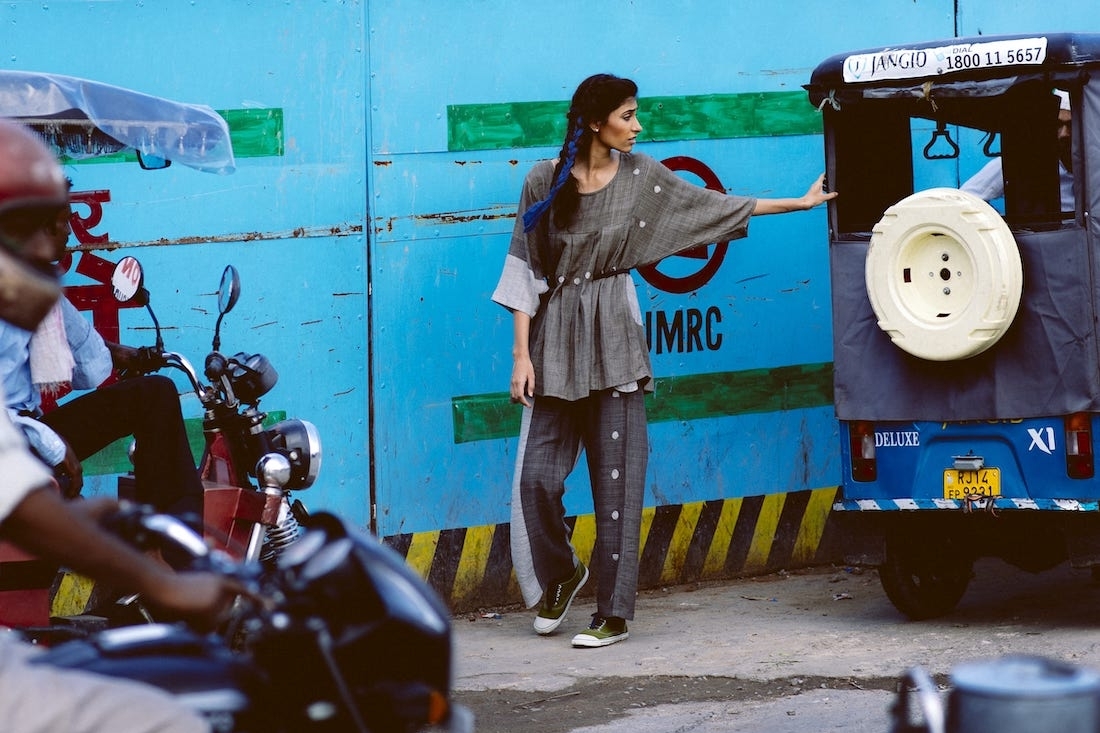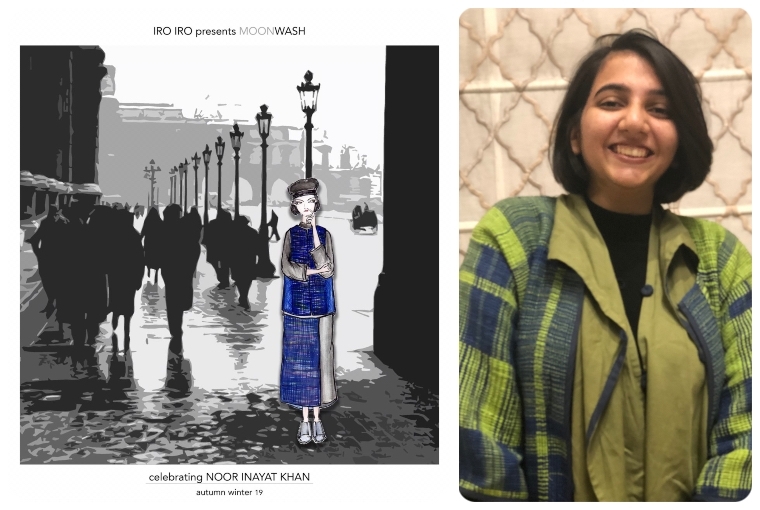

Sustainability, when I think of this word in the same train of thought as fashion, it renders me uneasy. The term is having its moment right now, it's de rigueur for labels to jump on the bandwagon for their claim to fame. Sustainability has become the new trend, but this also implies that there’s a high probability that it might soon become highly overexposed and lose all its relevance. Somedays I truly question myself if sustainability is as chaste as rejecting all kinds of fast fashion and purchasing clothes made from organic and cleaner raw materials, but what good would that do if only the source of consumption alters, wouldn’t the environment still pay a hefty price because of our constant consumption. Apparently Instagram knows how to answer these existential questions that plague me from time to time. One random day, a quick scroll through my feed led me to Iro Iro: Zero Waste and as lyrical as the name sounds, the brand is committed to their cause of upcycling waste fabric and thus trying to manage the waste footprint of fashion.
Textile designer Bhaavya Goenka was exposed to art all through her childhood, she lived in a house which she defined as her 'grandmother’s personal gallery'. A healthy dose of manga and anime introduced her to the inclusivity found in these Japanese genres and thus her inclination towards art and design grew. As her family dabbled in manufacturing garments, the young designer chose to further take up Apparel Manufacturing for her formal education. She already knew waste management was an issue for the textile industry, but it was her mother’s idiosyncrasies that eventually led to the germination of Iro Iro. She had seen her mother upcycle waste fabric into hangers or baskets. Bhaavya then took to indigenous crafts found in the country as a solution. Iro Iro works with a succinct philosophy, which is to draft a circular system for all those who produce textile waste. She elaborated, 'We not only mean to create a circular economy but also utilise crafts indigenous to us and generate work for rural artisans. Our goal is for the artisans to earn wages that are not just minimum and for this we focus on our quality and design.' So in layman terms, they collect waste and then unskilled employed women convert it into linear form, which is then taken to the handlooms and finally cut into zero waste patterns inspired by ancient Indian garments. The end result: an Iro Iro garment with absolutely no waste generated.
The designer who follows a one year one collection pattern, is deeply inspired by the people around her, their likes, dislikes and habits. Stirred by women in history who possessed independent thought, she created the 2019/20 collection, MoonWash. A nuanced pastiche, the collection has six outfits, each modelled after the likes of Noor Jehan, Joan of Arc, Cleopatra and Noor Inayat Khan, amongst others. The slow fashion brand is also a part of Fashion Open Studio under the ongoing digital Fashion Revolution Week. Virtually sharing the creative process behind MoonWash, Bhaavya explained, 'We are talking about how these new heroes informed their design language. We plan to create one illustration a day which would be these heroes wearing Iro Iro. We also have letters written by various people which would be read each day for these women, to include diverse voices.'

L: Illustration of Poor Inayat Khan; R: Bhaavya Goenka
I remember learning one very valuable lesson in college, the only constant in life is change. Although, amidst a pandemic like Covid19 the momentum at which this change was thrust upon the world just doesn’t sit right with a lot of those, whose supply chains have been cut off and who sit on the edge of penury. For a fairly small setup like Iro Iro, the question that arises is one of survival. Bhaavya talked about the situation adding, 'We’re making new discoveries each day, we found out our artisans in the village are receiving ration from the government but the daily wage labourers in the city aren’t covered. Our aim is to ensure our ecosystem is safe. We are maintaining communication throughout our value chain. I think we’re able to see more clearly as to what mass consumerism has done to nature and I hope people move towards choices in collaboration with the environment.'
I’ve always wondered if sustainability is a fallacy. Can we embrace it truly if we’re always surrounded by the concept of excess, perpetuated by capitalism. However, listening to passionate voices like Bhaavya’s does fill me with a sense of optimism. We may not be there yet but there’s a community of individuals like hers striving tirelessly towards the goal. As a parting note she added, 'I think we need to start defining what unsustainable is, chart out harmful practices and put those in the spotlight, whose practices are doing more harm than good. I also think every opportunity to design is about communication, what a product is trying to tell the consumer, thus I personally believe in prosperity and not upscaling.'
Text Unnati Saini